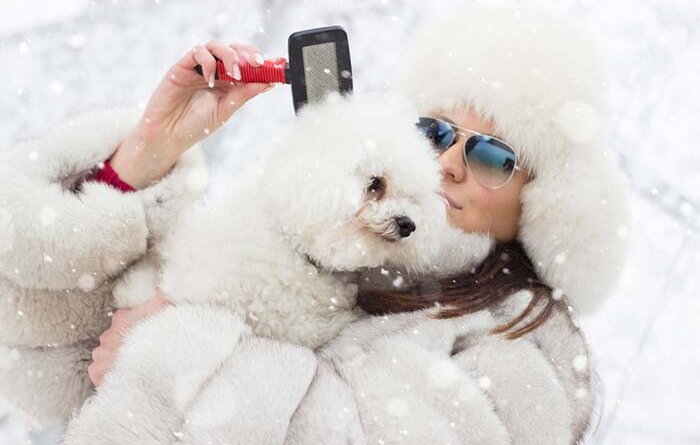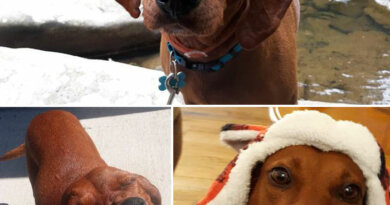5 Ways to Reduce Excessive Dog Shedding in Winter
During the winter, dogs grow an extra coat of fur to help insulate themselves, which gets shed in the summer.
Dogs that live indoors either all the time or most of the time will shed year-round and get rid of damaged or broken hair.
If their skin is dry or irritated, they will likely have excessive shedding. Here are some tips on dog shedding in winter and how to deal with it.
Shedding in dogs is natural and normal for all breeds, and there are no “real” non-shedding dogs – some simply shed less.
However, dog shedding in winter can also be caused by a medical problem.
If you take all the steps listed below and still don’t see a change in shedding, it may be time to contact your veterinarian.
What causes excessive shedding in dogs?
Many factors or health problems can be the potential cause:
- immune system diseases
- sunburns
- kidney disease
- canine influenza
- liver disease
- thyroid disease
- parasites
- bacterial infections
I should say first that, for the most part, don’t assume that it’s the worst-case scenario if they are shedding more than usual.
But if you notice an increase in dog shedding in winter, pay close attention and look for any signs that it may be due to a more severe condition.
Female dogs also tend to shed more during pregnancy.
So if your unspayed female begins to shed more frequently, there may be a chance of her being pregnant.
All pet owners living with hair removers by their side at all times agree that dog hair around the house can be challenging to deal with.
The below five tips will help with excessive dog shedding in wintertime that may be caused due to some health issues, whether minor or severe ones.
ALSO READ: 9 Tips on How to Protect Your Dog’s Paws in Winter
5 Tips for Excessive Dog Shedding in Winter
Reduce Your Dog’s Shedding Through Nutrition
A healthy diet is the first step to reducing excessive dog shedding in winter.
Most cheap dog food brands are made with fillers that dogs can’t digest properly, the most common being grains and corn.
Reduce the number of fillers in your dog’s diet, and you should be able to reduce shedding in your dog.
Furthermore, shedding can also be related to your dog’s food allergies.
Always look for dog food that lists meat as the main ingredient with the highest percentage of animal source protein.
Although better quality dog foods usually cost more upfront, they will save you money in the long term.
The higher the quality, the fewer chances of needing vet care and grooming care costs.
Meat-rich dog foods are digested and absorbed easier by canines, which helps control dry skin and shedding and prevent other potential health problems.
Good nutrition will reduce shedding, but it won’t eliminate it.
OWNER-APPROVED: The 30 Best Vacuums for Dog Hair
Keep Your Dog Hydrated
Dehydration will lead to dry skin, which can cause several problems, including excessive dog shedding in winter.
Dogs are more prone to dehydration in cold weather because their body uses more energy (and therefore water) to warm up.
And since it’s not hot, and they aren’t sweating, dogs are not as thirsty as they are in summer.
UF Small Animal Hospital has a very extensive guide (PDF) on understanding how your dog’s skin works.
It also talks about what role nutrition and hydration play in reducing excessive dog shedding in winter or summer (extreme temperatures).
You want to ensure your dog has access to clean, fresh water.
If you are worried about your dog’s hydration and cannot keep an eye on your pet at all times for him to drink enough, incorporate wet dog foods into his diet.
Wet food contains up to 78% moisture, compared to 10% in dry foods, and it’s the easiest way to hydrate him.
Brush Your Dog Regularly
Proper and consistent dog grooming is one of the best ways to reduce dog shedding in winter.
Brushing your dog’s coat routinely removes excess fur.
This redistributes your dog’s skin oils into his fur.
This helps the fur stay in place and reduces excessive shedding.
Ideally, you should brush your dog’s fur daily, or even twice a day, if your dog really has a problem with shedding.
Using the correct brush type for your dog’s fur is essential. There are two categories with their own subcategories of brushes for dog shedding.
Specific deshedding tools for dogs remove up to 90% of shed hair, too.
Dog brushes
Short-haired, smooth-coated dog breeds should use bristle brushes.
Bristle brushes look similar to human hair bristle brushes.
Stickler brushes are best for dogs with medium-length or curly hair.
Stickle brushes have tiny, tightly-packed short wire pins.
Dog breeds with long hair or thick undercoats should use rakes.
Rakes have pins about the same length as your dog’s fur, which works well to thin out dead undercoats.
Deshedding tools
If your dog sheds heavily in the winter, a deshedding tool like FURminator is usually best.
This should be used in spring before your dog’s winter coat falls off and in fall before the winter coats come in.
Dogs who live all the time indoors will likely shed year-round.
If your dog’s coat is shorter, rubber curry combs can be used to de-shed.
Dogs with thick or long coats need an undercoat dematting rake or a shedding blade.
If you are unsure what kind of brush is best for your dog’s fur, ask your veterinarian or a professional pet groomer for advice.
Bathe Your Dog (but not too much)
Regular baths will help with dog shedding in winter because they allow loose hair to fall out in the tub instead of all over your home.
Oatmeal dog shampoo is often the most recommended for bathing dogs.
However, over-bathing your dog can dry its skin, making the shedding worse, especially in winter.
Depending on your dog, you should only bathe once a week, once biweekly, or once a month.
Research your dog’s breed to learn more about their recommended bathing schedule, or ask your veterinarian for advice.
Long-coated dogs can be blow-dryed after a bath using a pet-friendly blow dryer, but only on the lowest heat or cool air.
If you use a blow dryer, towel dry your dog first. (Here’s a guide and video on choosing a safe dryer for your dog.)
Control Fleas
Just because it’s winter doesn’t mean you can stop all flea treatment and prevention. Even in winter, dogs can still get fleas.
Fleas can bring about plenty of problems.
Your dog will scratch a lot if he gets fleas, leading to irritated skin, dandruff, and excessive dog shedding in winter. There are plenty of different kinds of flea treatments available, along with regular preventative treatments.
This will keep your dog flea-free and reduce overall shedding.
FAQ on Dogs Shedding In Winter
Why Is My Dog Shedding So Much?
There could be several issues. Sometimes excessive shedding could be hair loss because of scratching and biting caused by: parasitic infection, fleas, ticks, lice, and mites.
The other alternatives could be other factors like:
- Diet (this is the most common)
- Using shampoo that dries their skin or just causes hair loss
- Excessive stress
- Issues with hormones
- Other diseases like cancer
Do Dogs Shed More Hair in Winter?
Dogs do shed during the winter.
It is to prepare their thicker coat to come in and protect them from those biting cold temperatures.
Some dogs are more prone to more hair loss and shedding than others during winter.
Dog Shedding In Winter: Closing Thoughts
Any of the above steps (ideally, a combination of all of them) will help reduce excessive dog shedding in winter.
Once you see a decrease in shedding, you may still notice hair around your house.
Vacuuming using a pet hair vacuum is the most efficient way to remove dog hair.
You should avoid letting dog hair sit on one surface for too long, as it can make it more difficult to remove.
On upholstery, lint rollers work great at removing hair.
If you find your clothes are also covered in hair, a lint roller can take care of that.
READ NEXT: 9 Safety Tips for Walking Dogs In Winter
Related








